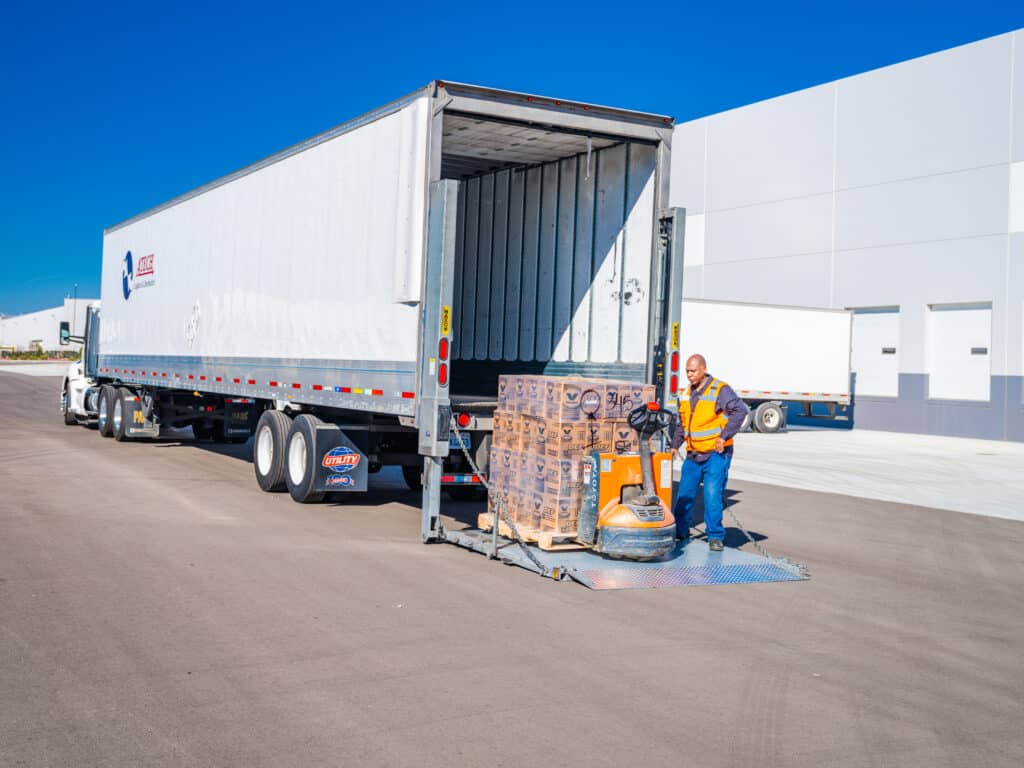
Truck driving is a critical job that directly impacts the supply chain, businesses, communities, and the economy. The supply chain industry provides work to many, and it offers a variety of opportunities that can fit the needs and goals of many different personalities.
Opportunities in the industry include those behind the wheel. Long-haul, short-haul and port drivers are some of the jobs with the most demand. Here you can learn what each one entails, and how can you get there:
Long-haul Driver
The Job
Long-haul truck drivers transport cargo to one or various locations along the way in a journey that can be thousands of miles long. Days are long, and distances can be pretty significant. Because there are strict regulations requiring drivers to rest after a certain number of hours and days, in some cases, long-haul drivers might work in teams of two in order to speed up the transportation process and deliver goods in a timely manner.
Despite driving being an essential part of the job, long-haul drivers are also responsible for other tasks. Dependent on the kind of goods and cargo that they are transporting, the driver might be responsible for tasks such as monitoring and repairing refrigeration systems or giving maintenance to the truck.
Because long-haul drives involve hundreds of thousands of miles on the highway, drivers could spend days, weeks and months away from home.
How to Become One
Long-haul trips require a driver who is dedicated and able to stay on the road safely for such long periods of time. The basic requirements are the same as short-haul and port drivers. You need a Class A commercial driver’s license (CDL) and a clean driving record.
Specific to long-haul drives, companies usually prefer applicants who have at least 100,000 miles under their belt. However, it is understandable that many might be looking for an opportunity to get started as long-haul drivers, therefore, some companies offer training opportunities for those interested in building a career. This also helps meet the truck driver demand. Having auto-hauler experience is also a requirement by some employers.
Other important skills for a long-haul driving job include communication skills, driving skills and the ability to repair and maintain the truck. However, one of the key ones is the ability to spend long periods of time away from home. Long-haul driving is not for everyone, but those who are able to do it, get to enjoy traveling through many states and highways around the country.
Short-haul Driver
The Job
Short-haul drivers move trillions of dollars of goods every year, playing an important part in the supply chain.
Unlike a long-haul driver, the short-haul driver usually gets to go home at the end of the day. Short-haul trips can be between 150 and 250 miles from a central destination, making shorter distance deliveries throughout the day, which helps break up the monotony of being on the road for too long. Short-haul trucker opportunities might be a good fit for those interested in a trucking career but are concerned with long treks and isolation.
There are two kinds of short-haul drivers: regional and local.
Local
Local short-haul truckers make smaller trips of about 100 miles with regular routes. They tend to see the same customers and even develop relationships with them. It is a job that directly impacts and serves their communities. But, because they are making deliveries within the community, the narrow streets could present a challenge in maneuvering the truck. For that reason, short-haul local truckers tend to have smaller trucks and great skills to manage the challenges off the highway.
Regional
Regional short-haul truckers travel between 100 and 250 miles. Despite making longer trips than local short-haul truckers, regional drivers still have more benefits than long-haul drivers. Regional trips tend to be more predictable. With longer distances, they sometimes cross state lines, but have a better work-life balance than those traveling longer distances.
Benefits of Short-Haul Trucking
One of the greatest benefits of short-haul trucking is job security. In the shortage of commercial drivers, short-haul drivers are the most solicited and it is expected to increase in the upcoming years. Short-haul trucking is a stable career opportunity to thrive in.
Requirements
Depending on the size of the vehicle that will be used, the CDL class requirement could vary. For those driving a tractor-trailer, a CDL Class A License is needed. For smaller trucks used commonly for regional and local short-haul trips, a Class B or Class C License might be enough.
Port Driver
The Job
Port drivers are commercial drivers responsible for moving containers or freight between trucks, ships and other vehicles. These are usually short distances. They pick up and drop off cargo at port stations, such as rail yards and shipping ports.
While some port drivers start out as dockworkers or longshoremen, many truckers with a CDL are also interested in becoming port drivers as this can be a very lucrative and stable career.
How to Become One
Like any other trucker career, a CDL-A and a clean driving record are needed. The difference is that port drivers are also required to have a Transportation Worker Identification Credential, also known as TWIC Card. Because port drivers have access to secure areas of the nation’s maritime facilities and vessels, the maritime Transportation Security Act requires them to have it.
The process to obtain a TWIC card begins with an application through Transportation Security Administration (TSA). To determine eligibility, TSA conducts a security threat assessment of the person requesting it and then assigns it.
In some cases, companies might also require port drivers to have a HAZMAT endorsement. It is only sometimes the case, but that varies between companies.
The trucking industry offers various opportunities for those interested in being behind the wheel. It can be a very lucrative and stable career with many job opportunities that can adapt to what you are looking for. Find the right fit for you.

